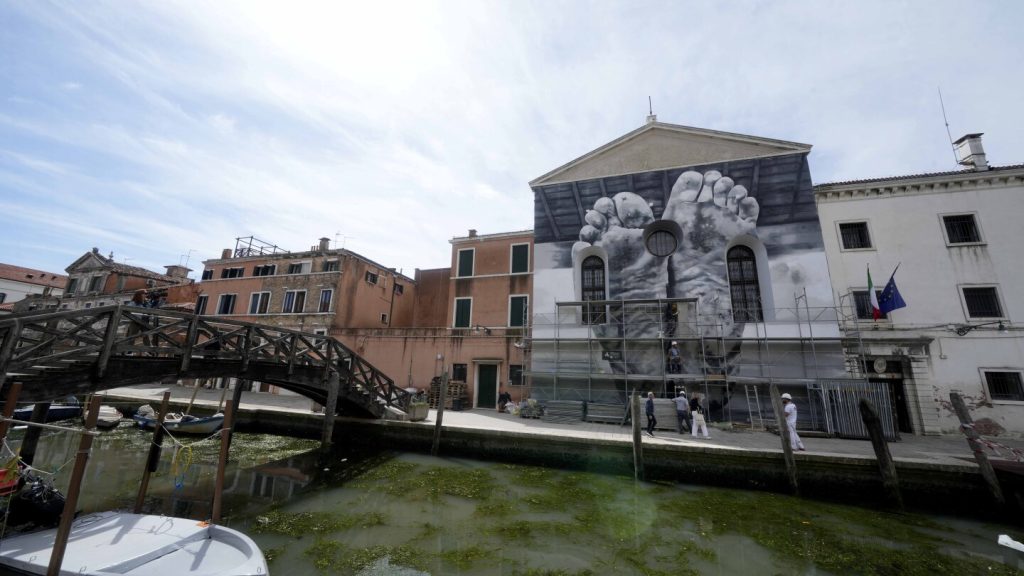The Venice Biennale contemporary art show, known for showcasing innovative and provocative works, is currently home to a collaboration between inmates of the Venice women’s prison and artists, including renowned Italian artist Maurizio Cattelan. Cattelan’s piece, titled “Father,” features a pair of vulnerable and wounded nude feet painted on the prison chapel’s façade. The Cardinal Jose Tolentino de Mendonca praised the work, noting its thematic significance in challenging religious representations and iconoclastic themes. This collaboration highlights the Vatican’s willingness to engage with artists and works that may be critical of institutions like the Catholic church.
The Vatican’s culture minister expressed Pope Francis’ call for dialogue and engagement with diverse perspectives, including those that may challenge traditional beliefs. This collaboration with artists like Maurizio Cattelan demonstrates a willingness to explore unconventional artistic expressions that push boundaries and provoke critical discussions. Pope Francis is scheduled to visit the pavilion, interact with inmates and artists, and engage with the thought-provoking works on display, showcasing the Vatican’s commitment to embracing different voices and perspectives within the artistic community.
Cattelan’s work, which includes the portrayal of nude feet on the prison chapel, symbolizes a journey towards understanding and exploring themes of carnality and vulnerability. The immersive experience of viewing these works within a prison setting adds layers of complexity and depth to the artistic dialogue, encouraging visitors to contemplate themes of freedom, visibility, and empathy. The inclusion of inmates in the project, through tours and interaction with artists, provides a platform for their voices to be heard, offering moments of connection and recognition within the artistic community.
The collaboration between artists, inmates, and curators in the Venice Biennale project creates a unique synergy that opens up lines of empathy and understanding. Through artistic expression, inmates find moments of visibility, encouragement, and hope, as reflected in the neon signs and artworks created by the participating artists. The project aims to highlight the humanity and resilience of incarcerated individuals, challenging stereotypes and offering opportunities for personal growth and transformation through art.
The project curated by Chiara Parisi aims to leave a lasting impact beyond the Biennale, with plans to find new venues for the artworks and continue similar initiatives that promote artistic expression within prison settings. The legacy of the project extends beyond the physical artworks, emphasizing the importance of freedom, self-expression, and the potential for personal growth and redemption through artistic collaboration. By providing visibility and recognition to incarcerated individuals, the project challenges societal perceptions of justice, rehabilitation, and the power of art to create moments of connection and understanding.
Through the Venice Biennale project, artists, inmates, and curators come together to create a transformative and thought-provoking exhibition that challenges traditional boundaries and explores themes of vulnerability, freedom, and empathy. The collaboration between Maurizio Cattelan, the Vatican, and incarcerated individuals showcases the power of art to bridge divides, inspire dialogue, and foster connections across diverse communities. As visitors navigate the prison space and engage with the artworks, they are invited to reflect on their own preconceptions and biases, ultimately leaving with a deeper appreciation for the transformative potential of art in creating moments of connection and understanding.


